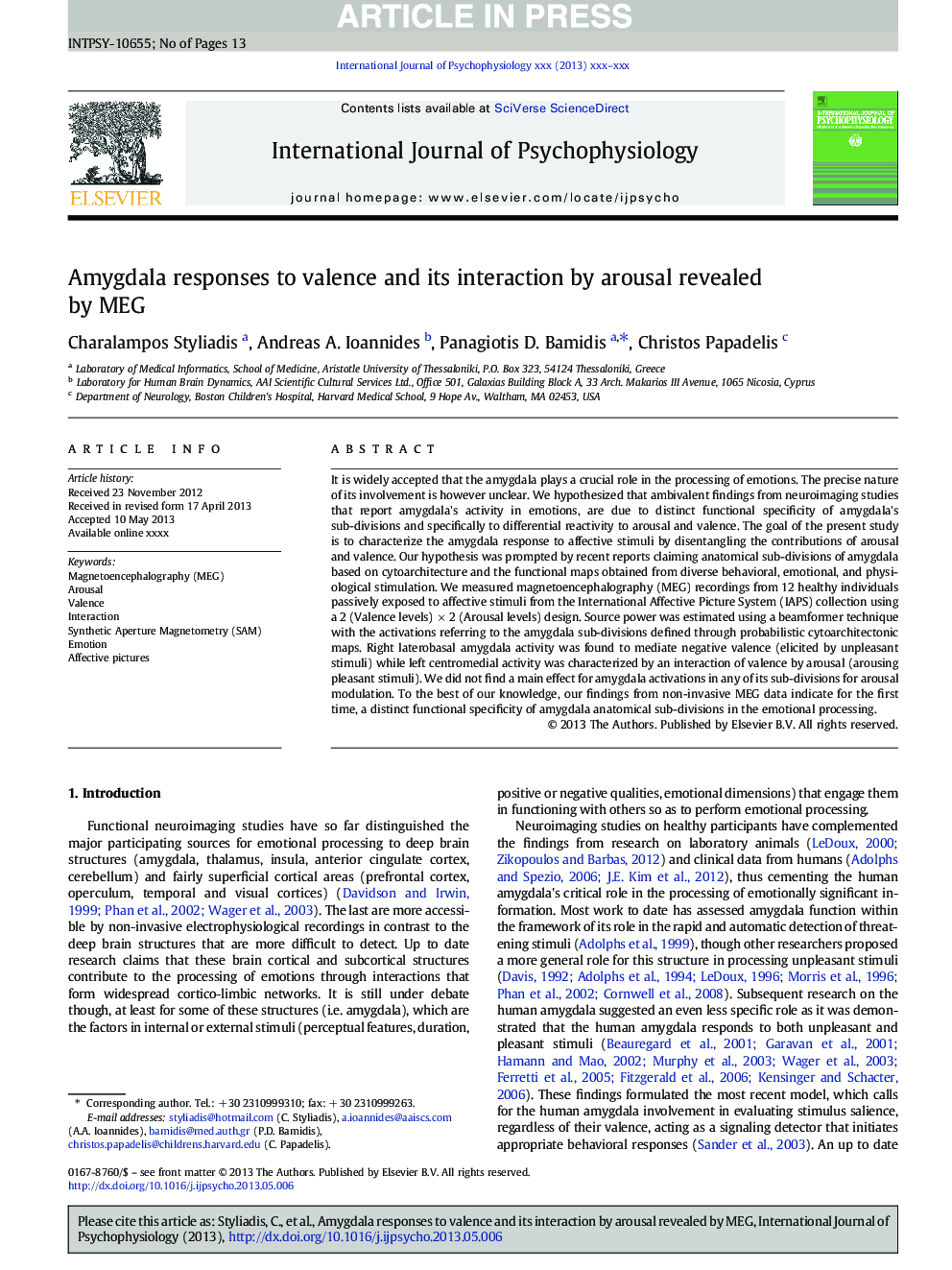| Article ID | Journal | Published Year | Pages | File Type |
|---|---|---|---|---|
| 7295740 | International Journal of Psychophysiology | 2014 | 13 Pages |
Abstract
It is widely accepted that the amygdala plays a crucial role in the processing of emotions. The precise nature of its involvement is however unclear. We hypothesized that ambivalent findings from neuroimaging studies that report amygdala's activity in emotions, are due to distinct functional specificity of amygdala's sub-divisions and specifically to differential reactivity to arousal and valence. The goal of the present study is to characterize the amygdala response to affective stimuli by disentangling the contributions of arousal and valence. Our hypothesis was prompted by recent reports claiming anatomical sub-divisions of amygdala based on cytoarchitecture and the functional maps obtained from diverse behavioral, emotional, and physiological stimulation. We measured magnetoencephalography (MEG) recordings from 12 healthy individuals passively exposed to affective stimuli from the International Affective Picture System (IAPS) collection using a 2 (Valence levels)Â ÃÂ 2 (Arousal levels) design. Source power was estimated using a beamformer technique with the activations referring to the amygdala sub-divisions defined through probabilistic cytoarchitectonic maps. Right laterobasal amygdala activity was found to mediate negative valence (elicited by unpleasant stimuli) while left centromedial activity was characterized by an interaction of valence by arousal (arousing pleasant stimuli). We did not find a main effect for amygdala activations in any of its sub-divisions for arousal modulation. To the best of our knowledge, our findings from non-invasive MEG data indicate for the first time, a distinct functional specificity of amygdala anatomical sub-divisions in the emotional processing.
Keywords
Related Topics
Life Sciences
Neuroscience
Behavioral Neuroscience
Authors
Charalampos Styliadis, Andreas A. Ioannides, Panagiotis D. Bamidis, Christos Papadelis,
